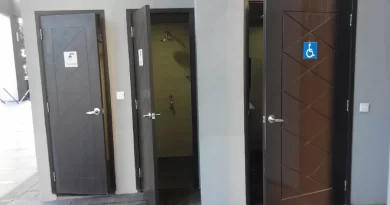Save Money and Time: Master These Appliance Troubleshooting Hacks Like a Pro
Household appliances make life so much easier when they are working properly. However, when something goes wrong, it can be frustrating and cost time and money if you have to call in a repair person. With some basic troubleshooting, you can often solve many common appliance problems yourself.
DISHWASHERS
One of the most common issues is when the dishwasher isn’t draining. If your dishwasher gradually starts leaving standing water at the bottom after the wash cycle, there are a few easy things to try before calling a repairman. First, confirm that the cycle is fully finished and not still running. Many newer dishwashers have electronic controls that may not give a clear indication that the cycle is completed.
The next thing to check is whether the dishwasher drain hose is kinked. Carefully inspect the hose and make sure there are no tight bends or pinches. While inspecting, also check that the hose connection points are still intact and secure, with no leaks or cracks. Tighten if needed.
Refer to your appliance manual for specifics on your make and model. Typically, you’ll find an access panel near the bottom, where you can check and clean the drain filter. Alternatively, the manual should also have instructions to clean out the interior pump to remove any stuck debris.
REFRIGERATORS
Another frequent problem is when the refrigerator suddenly stops cooling properly. Start by confirming that power is still connected to the fridge. Then, check that the doors are sealing properly. If there are any gaps keeping the cold air from being contained, then warming will occur. Door seals can wear out over time. Carefully run your fingers along all edges to feel for any openings or cracks, and call for service if seals need replacing.
Also, inspect the condenser coils for dust buildup. Lots of debris will cause the fridge components to run hotter. The coils are usually accessible either in the front bottom or back panel. Use a vacuum with a brush attachment to gently clean. Move the fridge out for better access if needed, but be careful when pulling to not damage the thin piping that carries the refrigerant gas.
WASHING MACHINE AND DRYER
Finally, problems with laundry machines often arise, too. If a top-loading washing machine isn’t spinning or agitating, check that it is sitting firmly leveled. Uneven footing can keep the internal suspension system from working. Use a level-checker on the machine’s top or rim to verify all corners are even. Then, check that shipping bolts were removed after delivery. These temporary stabilizers get forgotten sometimes. If still installed, they can interfere with proper operation by blocking suspension movement.
When an electric dryer won’t start, the initial problem is often a clogged lint filter or loose power cord connection. However, on gas dryers, it may indicate that service is required for the ignition source. Never attempt to repair gas appliances yourself unless you have professional HVAC training. Improper disassembly could result in a dangerous gas leak. Call for service assistance instead for your safety.
By learning some basic troubleshooting techniques for common appliance issues in your home, you can save considerable hassle, money and time. However, also recognize when professional repair help is the wise solution. Home maintenance know-how has useful limits, and complicated components inside modern appliance systems may require a certified service technician.




